No peacocks around here—we’re Aussie
Paying out a mate for committing a fashion faux pas is a distinct display of Australian masculinity. But are we moving beyond the fear mongering, to a place where men can safely embrace style?
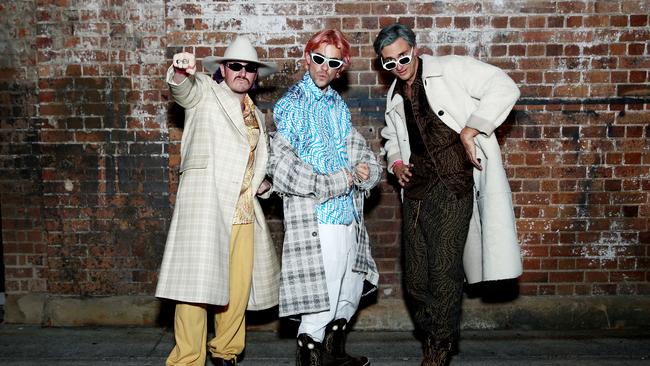
It’s Saturday afternoon, and a pretty typical scene is taking place inside the pub. A group of guys have spotted one of their own wearing something out of the ordinary — a pair of shorts deemed slightly too short — and they’re not letting him live it down.
“Mate, what are those?!” laughs one of the men, loudly enough for other revellers to hear, as he points at the shorts. “Do they make them for men?!” snorts another.
The friend in the short shorts laughs along – it’s just a bit of harmless banter between mates, nothing malicious – but the following weekend he heads out wearing something more subdued. Sometimes it’s easier not to draw attention to yourself.
Anecdotes like this pervade Australian society, and male friendships in particular.
It’s a peculiar cultural attitude that’s captured in a new memoir by Sydney Swans player turned writer and musician Brandon Jack.
“Not standing out is a big thing at a footy club. We were very much the prime example of tall poppy syndrome,” writes Jack. “If you wore a new item of clothing it wouldn’t go unnoticed. Some guys had a photographic memory of the kits everyone owned and wore, and having the same outfit as someone else would lead to a photo and the ‘Sammy same kits’ nickname.”
But why does this culture of ridicule exist in relation to men and fashion? And could it be that as our understanding of manliness evolves, so will the attitude of Australian men to fashion?
“My job as a street-style photographer in Sydney is a lot easier than it was when I started a decade ago,” says Giuseppe Santamaria, who runs the popular style blog and Instagram account, Men in this Town. He says that in the past two to three years especially, he’s observed Australian men growing more “brave” with their choice of clothing. This progress is captured in his forthcoming coffee table book, Men In This Town: A Decade of Men’s Street Style, to be published in September.
“I’ll go out into the CBD with my camera once a week now, and get a good 20 to 30 photos of guys who are wearing something fun. That’s compared to the maybe one or two photos I got when I started off.”
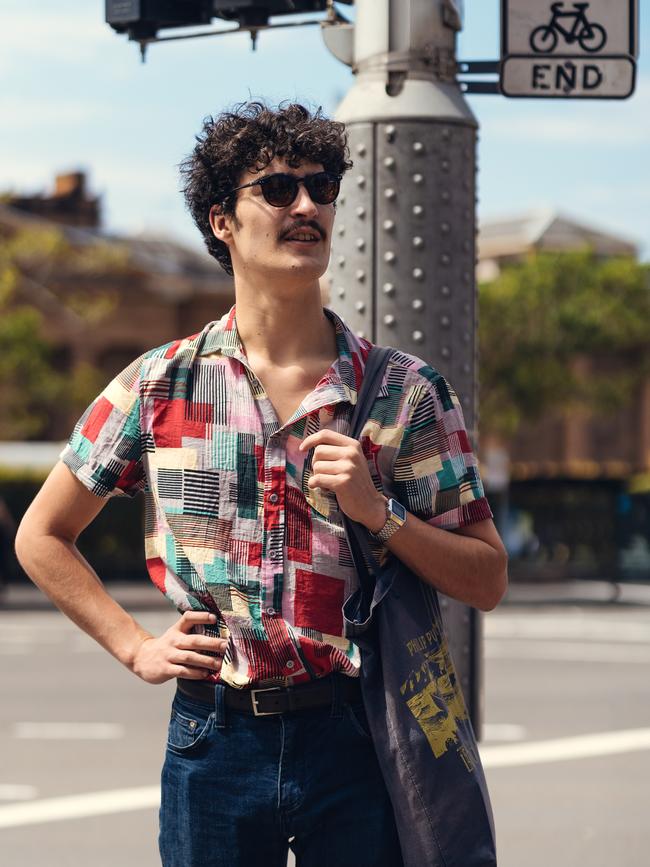
In 2010, when Santamaria first took to the streets of Sydney with his camera, men’s fashion in Australia was a very different scene.
The #MeToo movement was still seven years away and in Australia, traditional images of masculinity – “strong, white men such as convicts, bushrangers, lifeguards and explorers”, as sociologist Raewyn Connell wrote in a 2003 book titled Male Trouble: Looking at Australian Masculinities – tended to inform and influence the way men presented themselves.
“I don’t think the white Anglo-Saxon male is as predominant as before,” says Connell, whose seminal 1993 text, Masculinities, has just been published in Farsi – the 11th translation it’s received.
“The older model of the married ‘breadwinner’ is less relevant to younger men today, and most of the population is urban. There’s a wider range of ethnic communities and gay men’s masculinities have become more visible – that’s an important change.
“Yet white, heterosexual, Anglo-Saxon males still dominate in parliament, at the top levels of the corporate world and in the affluent professions,” she adds.
It might seem like a big stretch – to say these men are influencing the way we dress ourselves. But by virtue of being in very visible positions of power, the influence is inevitable.
While Connell’s research hasn’t delved too deeply into men’s style, she notes that Australian men do care about what they wear, and are mostly influenced by global trends.
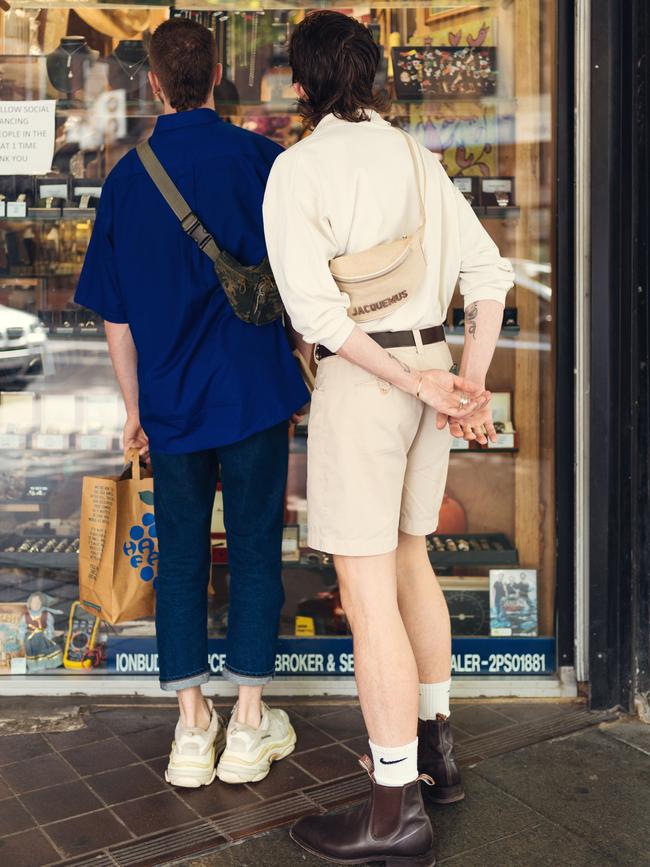
“Fifty years ago Australia didn’t have the hoodie, now you see it everywhere. I think a major influence on Australian men’s clothing styles is [inside] the container ships.”
Rosie Findlay, a digital fashion media scholar who grew up in south Sydney and is now based in London, where she is the course leader of MA Fashion Cultures at the prestigious London College of Fashion, also disputes the idea Australian men don’t care about their appearance.
The desire to look good just manifests differently to how it does in her adopted city, she contends, where a history of Savile Row tailoring and youth subcultures bleed into the way men dress.
“I think Australian men have always found ways to display their bodies, even if it’s not classed as ‘fashion’,” Findlay says.
“Like, having a fit, strong body and wearing something simple that calls attention to your physique.”
She points out that some arenas are more accepting of things like colour and pattern than others.
“Swimwear is an area where it’s more appropriate for men to get dressed in flamboyant colour, while showing their bodies off,” she says.
“Australian men do care about how they dress. But maybe in the mainstream, it’s about trying to find areas that are comfortable and permitted, so you’re not going out on such a limb.”
In order for progress to occur, of course, some form of going out on a limb is necessary.
This is something Sean Venturi learned when he launched Venroy, an Australian “resort wear” brand that’s popular with men (and women) who enjoy looking good, not at the mercy of feeling comfortable in a social and a functional sense. It took a few years of trade and a complete business restructure but, since starting his brand in 2011, Venturi has realised and acted upon something that’s eluded many of his contemporaries.

“I think it’s about giving guys confidence. People just want permission,” says the designer, who recently opened his brand’s first Melbourne outpost in the suburb of Armadale.
“Because there’s this attitude, I think it’s universal but especially strong in Australia, where guys just don’t want to look like dickheads.
“They want the security of a uniform. They don’t really want to call attention to themselves.”
Connell, the sociologist, says she’s “sceptical” to attribute this to tall poppy syndrome, as it “implies Australians have a homogeneous set of attitudes”.
Regardless, standing out can also be burdensome. Like our idiosyncratic friend at the beginning of this story, you’re opening yourself up to being cut down.
As Santamaria and Venturi have observed, the fearmongering effect of that cutting-down culture seems to be subsiding, however slowly. Yet preconceived notions die hard and, in some pockets of society, traditional displays of hegemonic masculinity continue to rule. “I think the stigma that’s always been there with fashion is: you’re into fashion, so you’re gay,” says Santamaria.
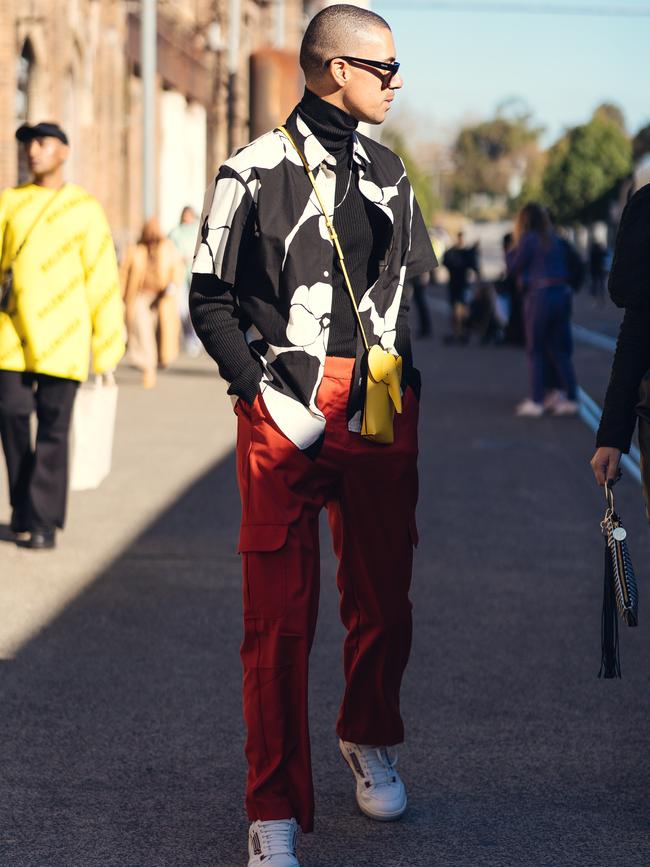
“It’s not necessarily intentional, it just kind of seeps into the Australian subconscious. But it’s always been the way that if you had style, you’d have a term created for you – like metrosexual. And that’s obviously associated with homosexual,” the photographer adds.
Santamaria believes this has been an elephant in the room, and that many men working in fashion and adjacent industries have been hesitant to address it.
“It’s because people don’t want to sound wrong by saying it. But I think it’s definitely been a barrier.
“Right now, that insult is less powerful, so fashion is being played with a bit more,” says Santamaria, nodding to celebrities such as Harry Styles and Australian pop star Troye Sivan – one straight, the other gay – who have been lauded for ushering in a new era of masculine self-expression as it pertains to style.
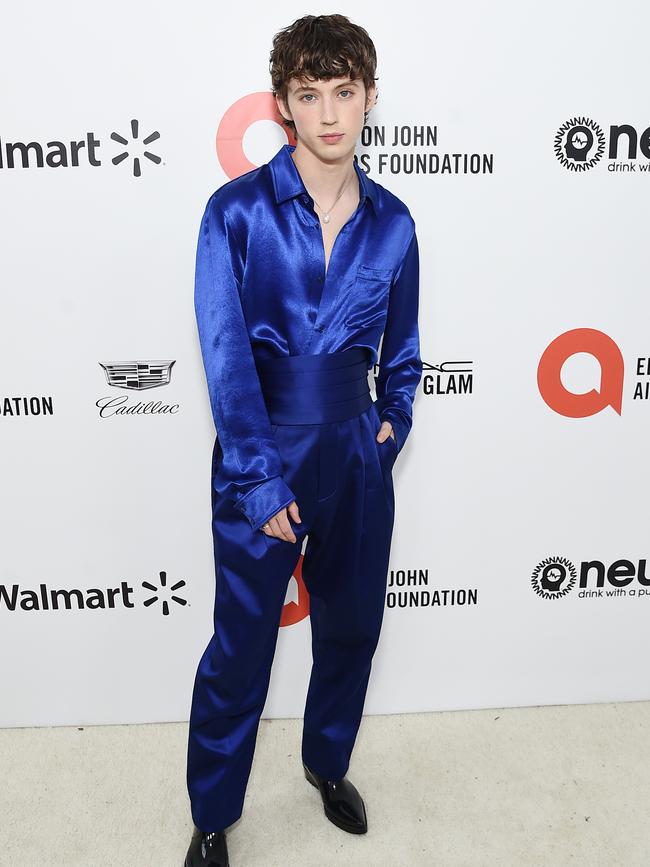
“It’s very much the case right now where male celebrities are expressing themselves through fashion the way they want. But that’s not entirely new – David Bowie did it, so did Mick Jagger. So it gets to this point where it’s like: ‘OK, is it going to last this time?’
“I feel like it might. But I don’t know. History says otherwise.”
A significant contribution to the style and masculinity debate in recent years has come from Nathaniel Weiner, a London-based fashion academic and the Cultural Studies, BA Fashion Textile and Jewellery Programs stage leader at another hallowed British fashion school, Central Saint Martins.
Like Santamaria, Weiner expresses a sense of cautious optimism.
“Gen Z does seem to be a lot more open to different ways of performing gender and sexuality,” observes the academic. “But I also think the visibility of this on social media can obscure the continued appeal of traditional masculinity, which tends to influence the vast majority of young men.”
Weiner has also theorised that we could be marketing fashion and clothing to men more effectively, if we simply used different words. A recent study of his found that men respond more positively to the word “style”, which is seen as individual and enduring, rather than “fashion”, which is viewed as ephemeral and trend-driven. The same can be said for images.
“There is a disjuncture between how men actually wear clothing and the commercially orientated representations of men’s clothing found in magazines, on the catwalks and in stores,” concludes Weiner, in a paper titled Fashion vs style: The repudiation of fashion in online menswear communities.
Maybe, as Weiner infers, the disconnect between runway fashion and guys feeling empowered to wear something different lies in menswear’s struggle to market itself to everyday men, especially those over the age of 25.
We can put this down to luxury fashion’s obsession with youth – countless collections from the most recent menswear month referenced youth as a point of inspiration — something that’s not really relevant to the 40-something professional who just wants a well-cut pair of pants, or the 26-year-old tradie searching for a new coat.
Perhaps, then, it is a new, more relatable breed of style icons Australian men need in order to feel represented by fashion.
Enter Jack Steele and Matt Ford. More commonly known as Instagram comedy duo the Inspired Unemployed, they have recently (and unexpectedly) emerged as “relatable” style icons.
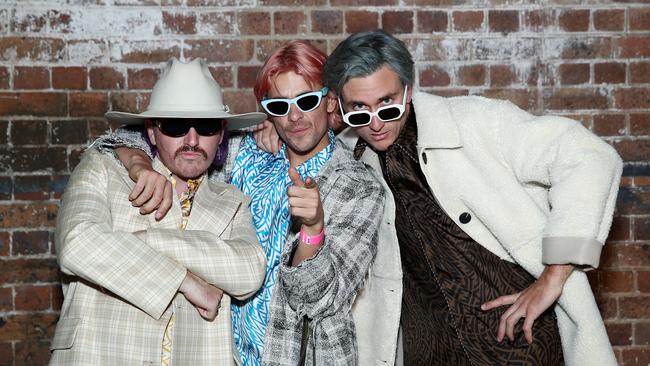
When Steele, 27, and Ford, 26 – both tradies from Kiama on the NSW south coast – began posting skits and dances to Instagram, they had no affiliation with fashion whatsoever. But when the idea of performing their dances in, say, Louis Vuitton, arose, it felt like a funny concept. Today, the “anti-influencers” regularly embrace outfits that might be considered “out there”, and their self-deprecating take on it all has struck a chord with the duo’s following, at least half of which is made up of pretty regular Australian guys.
Of course it’s not always about high fashion. At the most recent Afterpay Australian Fashion Week, the boys were seen parading around in Crocs, vintage shirts and trench coats. There was a generous application of irony involved. And ask any fashion brand or editor with a vested interest in the Australian market, and they’ll tell you that right now that’s what’s cutting through. “Masculinity – it’s changing. I don’t even think we know how to define it anymore,” observes blogger Santamaria.
Says Venturi of Venroy, “when we first introduced linen shirts at Venroy, not every Aussie guy wanted a linen shirt”. “But now it’s like … every single brand in Australia sells a white linen shirt, and every guy has one in his wardrobe.”
“I think it’s micro things that people change, and it takes time to really see it,” adds Santamaria.
Increased comfortability and confidence will succeed in transforming attitudes “ if nothing blocks it in the end, or makes it go backwards”.
“I think that’s the thing. If we keep going with it, and we keep encouraging it, every guy will feel safer trying something new.”
Amy Campbell is a features writer for GQ Australia
–
COMMENT: The hang-ups behind a friendly dressing down
I have long been conscious of the ambivalence many Australian men feel towards “fashion”. I grew up in regional Victoria, where weekends were reserved for local footy and cricket, and where mateships were forged in beer-soaked clubrooms afterwards, mostly while wearing sweatpants and a grass-stained guernsey. There, the boys who were brave enough to change into something even moderately trendy after games were “roasted” for it. Usually, said roasting was delivered with a side of bonhomie. But at times it struck me as being plain mean.
Yet still, paying out a mate for committing a fashion faux pas remains a distinct display of Australian masculinity. Like chugging a VB, or preferring not to talk about your feelings.
When I started my job at GQ magazine, Australia’s leading men’s style publication, my awareness of this attitude became more acute. Over time, I realised our publication — and any brand or individual operating in the local menswear arena — was competing against something far more deeply ingrained than ambivalence, or even indifference: we were selling style to a nation of men raised to associate fashion and dress with femininity and, by extension, weakness.
When it comes to the role of men in Australian society, we uphold the expectation that they must be seen as strong and stoic, which doesn’t leave much room for permission to play with appearance.
Some of the people I spoke to for this story believe that the cultural obligations that have prevented men from experimenting with fashion are softening. It does seem that as our understanding of what makes a man a man changes, attitudes that conflate fashion with femininity are too.
But that’s only part of the puzzle. As I write here, men’s fashion doesn’t tend to market itself very effectively to “everyday” men, particularly those no longer considered objectively young. A friend who works outside fashion brought the industry’s culture of ageism to my attention recently. “I feel like fashion, and streetwear especially, is marketed to young males,” he says. “There’s not that much out there in the mainstream that feels like it’s targeting your regular 30-year-old guy.”
Some Australian brands, like Venroy and others, are working hard to speak to this audience. And it is paying dividends.
Not just for the brands themselves, but for the “regular” men who are feeling more seen by the scene. Sure, we’ve got a long way to go before guys all over the country can leave their homes wearing a skirt without fearing ridicule. But I’m optimistic we’re heading in the right direction.
– AMY CAMPBELL


To join the conversation, please log in. Don't have an account? Register
Join the conversation, you are commenting as Logout